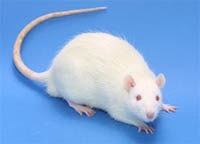-Lecture on 30 January 2009-
The first speaker, Professor Andrew Palmer began the lecture by showing the results of an experiment of the amount of carbon dioxide in the atmosphere. It has been increasing rapidly since the Industrial Revolution. He mentioned that the rapid increase in carbon dioxide might lead to a climate change. He states that the world is producing 200 tonnes of carbon every sec a day and thus a large scale effort is needed to have any impact of reducing the problems of climate change. He suggested a few ways including increasing fuel efficiency, finding alternate energy sources, capturing and storing carbon dioxide instead of releasing into the atmosphere. Professor Palmer focused on carbon dioxide capture and illustrated the structure of a carbon dioxide storage in the ocean. It can be done by compressing carbon dioxide enough and transferring it to the sea bed. But he also mentioned about the worries of the population and the problems that will arise from the storage. He then move on to the political problems. He mentioned about the problems faced by the government when trying to improve the situation of the climate change. He said that trying to solve the problems of global warming may not be a wise use of resource. Professor Palmer then ends off his lecture by saying that the world will be very fortunate if climate change is the worst problem in the next hundred years.
Following up next is Dr.Benjamin K.Sovacool who talks about using Science and Technology Studies method to address energy and technology problems. He first gave a background view of technology in general and gave a few reasons why people resist certain technologies. He then introduced the social science system that describes how technology and the society are linked. Dr.Sovacool brought up two case studies whereby the link between technology and social behavior is clearly seen. The first case study focused on the reasons why renewable power resources were not widely accepted by people. Some of them include cultural, social, political and economic problems. The second case focused on electric vehicles used in the early 1920s. The case study showed why electric vehicles, when compared to automobiles, had more attractive factors and yet lost the market to steam or gasoline powered automobiles. The reasons include the limitation of electric vehicles during World War II, Henry Ford's superior sales techniques and many social and cultural factors. Dr.Sovacool then concluded his lecture by emphasizing the political, cultural, social and economical factors that affects the technology that we used today.
The 3rd speaker, Dr.Rajasekhar Bala talked about the climate change that is affecting the Earth. He first revealed a few graphs showing the global average temperature increasing in the recent years. He explained that these are caused by the increase in human population and emission of greenhouse gases. Dr.Bala then gave a brief introduction on how the Earth is habitable because of the greenhouse effect. He gave a few problems that arised from the climate change. This included an increase in surface temperature of the Earth and extreme weather that will be worsen in certain areas. This will also affect human population through diseases caused by the climate change. Next, he moved onto the technologies that can be used to slow down the rate of climate change. Firstly, he mentioned about reducing the emission of greenhouse gases. Secondly, fuel efficiency can be increased to reduce the consumption of energy and in turn reduced burning of fossil fuels in power station. Furthermore, he mentioned about renewable energy sources including bio fuels and solar energy. Moreover, he suggested that government can tax industries that emit greenhouse gases which do not comply with environmental regulations. He added that urbanization promotes deforestation which in turn reduce the acquiring of carbon dioxide through photosynthesis. Dr.Bala concluded his lecture by suggesting a few ways to help reduce the problem of climate change. This includes taking public transport, using environmental friendly appliances. He also added waste should be viewed as a resource that could be reused or recycled for other useful applications.
After the lecture, I feel that to reduce the problems of climate change, a large scale effort, as emphasized by Professor Palmer, has to be put in by all countries in the world. However, this is easier said than done. The countries' government are usually restricted largely by economic factors. The economy is as fragile as the environment. A change in certain policy would have tremendous effect on the economy. No government would be willing to take the risk. Till the day the effects of climate drastically affects our lives, I feel that little action will be done to improve the situation.
Subscribe to:
Post Comments (Atom)

No comments:
Post a Comment